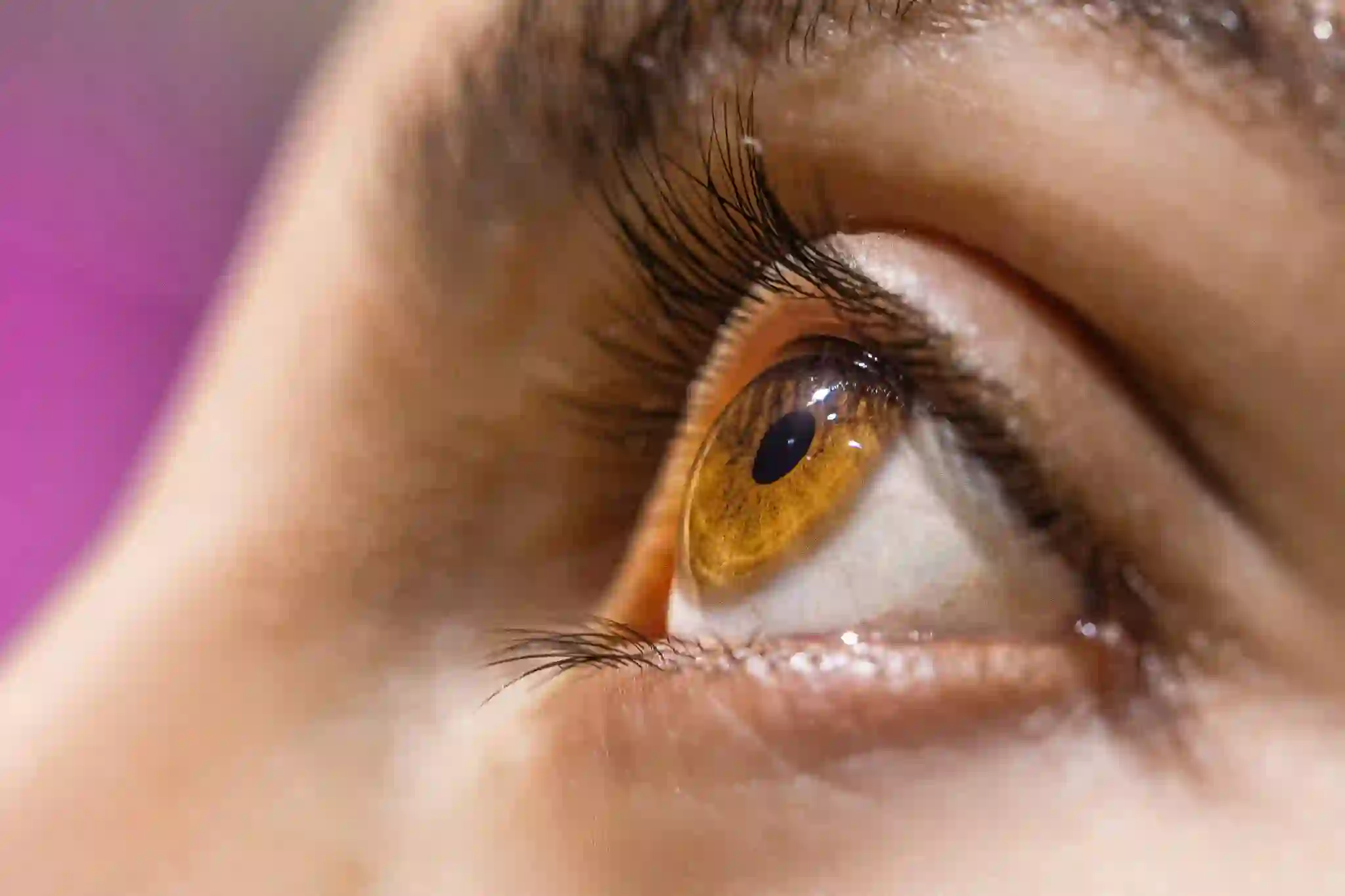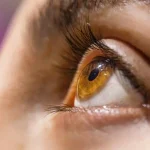What is Keratoconus?
Keratoconus is an eye condition with roots in genetics and environmental factors. While the exact causes may not be clear, a strong family connection is often present. Environmental factors like UV exposure and eye rubbing also contribute to the thinning and bulging of the cornea. Keratoconus typically begins in the teens or twenties, causing symptoms like blurry vision and sensitivity to light.
This condition is rare, affecting about 1 in 2,000 people, with higher rates in certain ethnic groups. Recognizing its rarity emphasizes the importance of awareness and early detection, especially for those with a family history. Regular eye check-ups are crucial for spotting keratoconus signs early. Treatment options, including special contact lenses or procedures, can then be tailored to manage the condition and preserve vision. Boosting awareness about keratoconus empowers individuals to take charge of their eye health and maintain clear vision.
Understanding the Impact of keratoconus
From vision distortion to social and psychological aspects, keratoconus leaves a profound mark on the daily lives of individuals.
Vision challenges:
Keratoconus initiates a journey of progressive vision distortion, commencing in the teenage or early twenties. The irregular corneal shape leads to persistent blurred or distorted vision, impacting routine tasks like reading or driving.
Light sensitivity impact:
Photophobia, or heightened sensitivity to light, is a common companion for those with keratoconus. This discomfort may lead to the avoidance of well-lit settings, hindering daily activities and outdoor pursuits.
Prescription adjustments:
The ever-changing corneal structure in keratoconus prompts frequent adjustments to eyeglass or contact lens prescriptions. This ongoing need for changes can be a financial and emotional challenge for individuals striving to maintain clear vision.
Daily activity limitations:
Keratoconus complicates seemingly simple tasks like watching TV, using a computer, or recognizing faces. The condition introduces limitations in activities heavily reliant on clear vision, impacting overall quality of life.
Psychological toll: Coping with a visual impairment can take a toll on mental well-being. Frustration, anxiety, and even depression may be part of the psychological impact as individuals navigate the challenges posed by keratoconus.
Social and professional influence:
Social interactions and professional pursuits can be influenced by keratoconus. Vision struggles may impact confidence, limiting both social engagements and career opportunities. Awareness and understanding from peers and employers play a pivotal role in creating supportive environments.
Quality of life reflections:
The combined effects of vision impairment, prescription changes, and psychological impact contribute to an overall reduction in the quality of life for those with keratoconus. Acknowledging these challenges sets the stage for effective coping mechanisms and targeted interventions.
Advanced treatments for keratoconus
Following are some widely performed new treatments for keratoconus:
Cross corneal-linking:
This is a quite commonly practiced advanced keratoconus treatment. Corneal Cross-Linking stands out as a revolutionary treatment for keratoconus, utilizing riboflavin drops and ultraviolet light to strengthen the cornea. This innovative method not only stabilizes the condition but also prevents further progression, offering hope for those seeking effective ways to halt the advancement of keratoconus.
ICL/PHAKIC Lenses:
Patients of Keratoconus are not fit for LASIK/SMILE/SILK. Phakic implants like ICL offer an option for spectacle removal in some of them.
Personalized C-CXL approaches:
Customized Corneal Cross-Linking (C-CXL) takes a personalized approach by tailoring treatment to individual corneal characteristics. Adjustments in UV light exposure and riboflavin concentration aim to optimize outcomes, providing a more tailored and effective treatment plan.
Innovative combined protocols:
Researchers are actively exploring combined protocols that integrate multiple treatment modalities to enhance efficacy. These synergistic approaches offer a comprehensive solution for managing keratoconus, showcasing a commitment to cutting-edge and integrated care. Topoguided PRK in combination with crosslinking is one such approach.
ICRS:
Intracorneal ring segments like INTACS, Biorings, etc are implanted to regularize the corneal shape in keratoconus.
Exploration of novel molecules and strategies:
Ongoing research delves into novel molecules and strategies for more effective keratoconus interventions. This includes investigating pharmacological agents and innovative techniques addressing the underlying processes contributing to the condition, paving the way for future advancements.
Evolution in keratoplasty procedures:
Advancements in keratoplasty, or corneal transplantation, have led to refined surgical techniques. Selective transplantation methods and innovative donor tissue preparation aim to improve outcomes, reduce recovery times, and enhance visual rehabilitation for keratoconus patients.
Minimally invasive additive keratoplasty:
Additive Keratoplasty techniques, such as intracorneal ring segments, provide minimally invasive yet effective options for reshaping and stabilizing the cornea. These advancements offer hope for managing keratoconus with precision and minimal disruption.
Advances in Diagnosis of Keratoconus
There are several safe and effective methods of keratoconus diagnosis. Here is what you need to know about keratoconus recent advances in diagnosis and treatment:
Corneal epithelial and bowman’s layer thickness mapping:
The outer layers of the cornea, including the corneal epithelium and Bowman’s layer, are now under the insightful scrutiny of advanced imaging techniques such as anterior segment optical coherence tomography (AS-OCT) and corneal topography. These innovative tools enable clinicians to construct detailed thickness maps, providing a visual representation of structural changes associated with keratoconus. These maps not only uncover irregularities and thinning within the cornea but also furnish a nuanced understanding of the condition’s progression. This precision in mapping enhances diagnostic capabilities, offering practitioners the means to implement targeted and personalized treatment strategies.
Corneal biomechanics
Understanding how the cornea responds to external forces is crucial in keratoconus diagnosis. Dynamic Corneal Response Analysis (DCR) and measures of Corneal Hysteresis enable clinicians to assess the cornea’s deformation and energy absorption properties. Deviations from normal biomechanical responses can signal the presence of keratoconus and provide valuable data for tailored treatment plans.
Biomarkers
Biomarkers for keratoconus are like early-warning signals in the eye, showing the presence or progress of the condition. Unlike traditional methods, which rely on more subjective assessments, biomarkers give a clear and objective picture. They help spot keratoconus in its early stages, giving doctors a chance for timely action and better outcomes. By being measurable indicators, biomarkers also help predict how the condition might progress. This not only reduces the risk of misdiagnosis but also lets doctors create personalized treatment plans, moving away from one-size-fits-all approaches and making keratoconus diagnosis more patient-focused and effective.
Artificial intelligence
Artificial Intelligence (AI) algorithms analyze complex corneal imaging data, uncovering subtle changes undetectable to the human eye. This technology processes high-resolution imaging swiftly and accurately, providing a thorough understanding of structural alterations linked to keratoconus. While exploring the latest advances in keratoconus treatment, AI excels at pinpointing tiny irregularities, ensuring unmatched precision. Its predictive modeling empowers clinicians to foresee disease progression, enabling proactive treatment planning based on historical data. Importantly, AI collaborates seamlessly with biomarker data, offering a holistic diagnostic approach that considers both molecular and imaging aspects. This breakthrough not only enhances diagnostic efficiency but also promises optimized therapeutic interventions and improved patient outcomes.
From breakthrough cross-linking methods to AI precision, the future looks bright for managing this rare eye condition. These advances not only improve accuracy but also offer tailored solutions. Early detection is key, and if you’re seeking top-notch eye care and the latest solutions, consider Centre For Sight. Your vision deserves the best, and we’re here to guide you toward a future with clearer horizons. Take the first step in caring for your eyes – schedule your check-up with us today.
FAQs
What are the traditional treatments for keratoconus?
Keratoconus treatments range from glasses and contact lenses to advanced interventions like corneal cross-linking or implants. In severe cases, a corneal transplant may be considered. Consult with your eye care professional for personalized treatment, and ensure regular check-ups to proactively manage your eye health.
Are emerging treatments for keratoconus safe?
Yes, emerging treatments for keratoconus, like corneal cross-linking, are generally safe. However, it’s crucial to consult with your eye specialist to determine the most appropriate option for your specific eye condition. Stay informed about advancements in keratoconus care for customized and safe treatment.
Will emerging treatments completely cure my keratoconus?
Emerging treatments offer significant improvement in managing keratoconus, but a complete cure cannot be guaranteed. It is advised to discuss your case with a skilled and experienced eye doctor.
How can I find the right specialist for my keratoconus treatment?
For optimal keratoconus treatment, consult with an experienced ophthalmologist or cornea specialist. Seek recommendations from your eye care provider or use online directories to find qualified professionals in your area.
Where can I get more information about emerging keratoconus treatments?
For comprehensive information on emerging keratoconus treatments, explore reputable medical websites, consult your eye care professional, and consider visiting the Centre For Sight’s website for additional insights. Stay informed on the latest advancements to make well-informed decisions about your keratoconus care.





